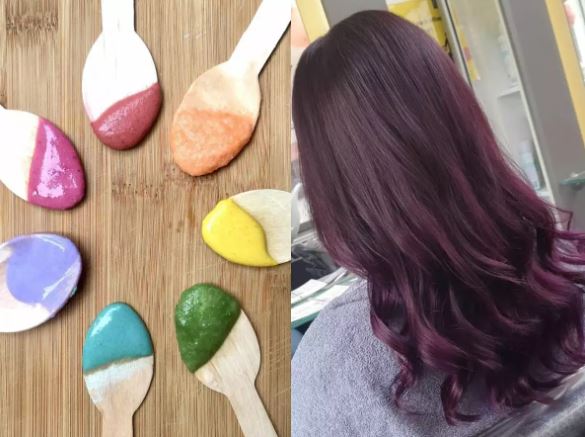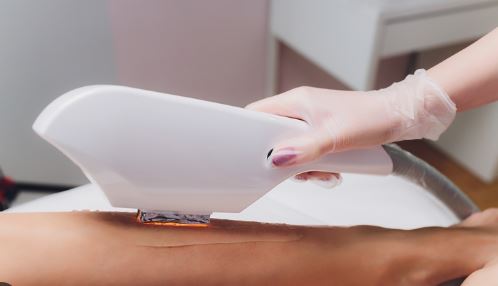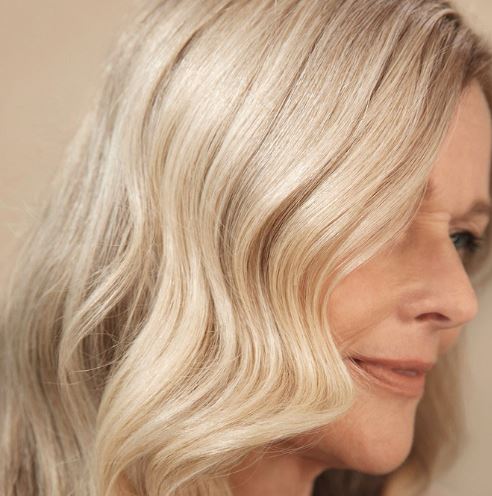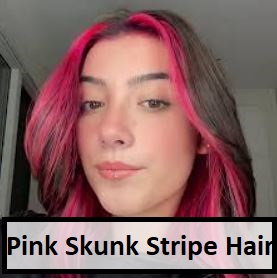Table of Contents
- 1 How to Choose the Right Hair Colour
- 2 Preparing Your Hair
- 3 Gathering Tools
- 4 Coloring Techniques
- 5 How to Apply Hair Color
- 6 Timing and Processing
- 7 Aftercare and Maintenance
- 8 Avoid these Common Mistakes
- 9 Dealing with Hair Color Disasters
- 10 Tips for Vibrant and Long-lasting Color
- 11 Maintaining Hair Health
- 12 Video Review – DIY Hair Coloring
- 13 Common Hair Coloring FAQs
You’re tired of the color you have on your hair and want to change it. DIY Hair Coloring allows you to express yourself and take control of your style in the comfort of your home.
With the right techniques and knowledge, you can achieve salon-quality results without spending a fortune.

This article will provide you with the necessary tips and tricks to achieve successful DIY hair color.
How to Choose the Right Hair Colour
It’s important to select a hair color that compliments your natural hair color, skin tone, and undertones before you dive into DIY hair coloring.
These factors will allow you to select a color that complements your natural hair and enhances the features of your face.
Observe the veins inside your wrist to determine your skin tone. You may have cool undertones if they are bluish. Greenish veins will indicate warm undertones.
Neutral undertones can be found in those with bluish-green veins. When choosing a hair color, consider these undertones to make sure it suits your complexion.
Also, consider your hair’s natural color. You may need to bleach your hair if you want to make a dramatic change. If you’re looking to enhance your current shade, select a color within a few shades of it.
Preparing Your Hair
To achieve excellent DIY results, preparation is essential. It’s important to test the dye on a small section of hair before applying it to make sure you are happy with the results and there are no negative reactions.
Select a small piece of hair at the nape, dye it, and then follow the instructions for processing time. This will allow you to see the final results and make any adjustments necessary.
Wash your hair next with a clarifying soap to remove any buildup of product or oils which may prevent the dye from penetrating.
After dyeing, avoid using conditioner as it may create a barrier that prevents the color from absorbing into the hair. After your hair has been washed, let it air dry or use the blow dryer at a low temperature.
To catch drips and spills, lay down newspaper or towels on the floor or surfaces.
Gathering Tools
Be sure to have the necessary tools and products before you begin the process. Select a hair color that best suits your needs and results.
The type of dye you select will depend on how committed you are and how long the color should last.
Stock up on gloves for protection against staining. Applicator brushes are useful for precise application. This is especially true if you plan to highlight or lowlight your hair.
Prepare mixing bowls and brushes in addition to the basic tools if your dye requires mixing. It’s important to have clean towels on hand for wiping off excess dye and protecting surfaces.
Coloring Techniques
Different techniques produce different results when it comes to DIY hair color. When choosing a hair coloring technique, consider your desired result and the level of complexity you are comfortable with.
To dye your entire head, separate your hair into sections. Apply the dye to each section from roots to tips. This method ensures that your hair is consistently colored.
Focus on the area of regrowth and avoid overlap with previously colored hair if you are only touching up your roots. Lowlighting is a technique that adds depth to hair by using darker shades.
Highlighting involves creating lighter sections. Beginners may find these techniques challenging, so practice them first.
How to Apply Hair Color
Clips can be used to section hair into manageable sections before applying hair dye. This will help to ensure an even application and make it easier.
Apply the dye to one section at a given time. Work your way from the roots down. Spread the color evenly with the applicator and avoid over-saturating your hair.
If you are touching up your roots, pay extra attention to the areas of regrowth.
You should apply the dye with care, covering all visible roots and avoiding overlap with previously colored hair. This will minimize damage and prevent unintended color results.
Timing and Processing
Each hair dye has a specific processing time recommended in the instructions. To achieve the desired shade, it’s important to follow these instructions.
Use a clock or a timer to accurately track the processing time. Monitor the progress of the color while it is being processed.
To determine if the color has reached the desired tone, check the color of one strand. If you feel the color is not developed enough, continue to process it for a few minutes more.
However, do not exceed the maximum recommended processing time.
Rinse your hair until it runs clear with lukewarm or warm water. Use a color-safe conditioner and shampoo to seal the color in and keep it vibrant.
Aftercare and Maintenance
Proper aftercare will ensure that your DIY hair color lasts for as long as you can. To prevent hair color from fading, use a shampoo and conditioner that are specifically designed for color-treated locks.
These products are kinder to the hair, and they help maintain the vibrancy of the color.
Heat styling with excessive heat can also fade colors more quickly. Use hot tools like flat irons or curling irons sparingly, and only on the lowest setting.
Protect your hair from the sun by wearing a hat, or spraying it with UV-blocking products to avoid color oxidation.
To maintain the desired color, you will need to touch up regularly. The frequency of touch-ups will be determined by the rate at which your hair grows and the contrast between the natural color of your hair and the dye.
Plan touch-ups accordingly to maintain your color and avoid noticeable regrowth.
Avoid these Common Mistakes
It’s important to know the common mistakes that can lead to mishaps.
Overlapping color applications is one of the most common errors. The application of new dye to previously colored hair may result in uneven results or excessive damage.
When touching up your roots, focus on the regrowth areas and avoid reapplying color to previously colored hair unless absolutely necessary.
Another mistake to avoid is choosing the wrong color. Refer to the color chart or swatches provided by the brand for an accurate representation.
If you are unsure, choose a lighter shade. It’s much easier to darken your hair than to lighten it.
Similarly, too much or not enough dye can also affect the final color. Use the amount recommended on the label of the hair dye. Consider purchasing an additional box of hair dye if you have long or thick hair.
Dealing with Hair Color Disasters
Even after taking all precautions, mistakes can happen. Don’t panic if you get an uneven or undesirable color. You can correct the problem or make it better.
You can blend the colors if you have an uneven color by using a semi-permanent color that is closer to your desired color. This will create a uniform look. If you want to achieve a result that is too dark or light, use a color-removing product or ask for professional assistance.
If you are unsure of how to correct a hair-color disaster, or if there is significant damage, you should consult a professional stylist who can help you with the process.
Tips for Vibrant and Long-lasting Color
Consider implementing these tips to keep your DIY hair color vibrant and last longer:
- Color-enhancing products are essential: Use shampoos, conditioners, and treatments that have been formulated specifically for hair color. These products will help to maintain the vibrancy of the color and prevent it from fading.
- Wear a hat or use UV-protected products to protect your hair. Sunlight can fade hair color more quickly. Wear a hat to protect your hair against UV rays or use products that have UV protection while spending time outside.
- Reduce the frequency of washing your hair: Too much washing can remove color. You can either limit your washing to every two days or use dry shampoo between washes in order to maintain the color of your hair.
- Deep condition your hair regularly. DIY hair dye can dry out the hair. Deep condition your hair once or twice per week to keep it healthy and lustrous.
- Trim split ends frequently: Split ends can cause your hair to look dull and lifeless. To maintain your hair’s health, schedule regular trims between six and eight weeks.
Maintaining Hair Health
It’s important to take care of your hair, even if it is beautiful. Here are some tips for maintaining healthy hair.
- Deep conditioning treatments: To restore moisture and repair hair damage caused by color, deep conditioning treatments are recommended regularly.
- Avoid harsh chemical treatments. Limit the use of perms, relaxers, and excessive bleach. These treatments will weaken your hair and cause damage over time.
- Balanced diets are important for healthy hair. A diet high in vitamins, minerals, and proteins will promote strong, vibrant hair. Include foods such as leafy greens and fruits, lean protein, and nuts in your diet.
- Use heat protection sprays to protect your hair.
These tips will help you maintain your hair’s health while still enjoying the benefits that DIY hair dyeing offers.
Also Check:
- Which Hair Color Is Better, Garnier or Loreal?
- Pink Skunk Stripe Hair
- Platform Cowboy Boots
- 5c Hair – Trying New Hair Type For New Experience
- Which Is Better Keratin Treatment Vs Hair Smoothening
Video Review – DIY Hair Coloring
Common Hair Coloring FAQs
What should I do if I accidentally get hair dye on my skin?
If you get hair dye on your skin, act quickly. Use a damp cloth or cotton pad to gently wipe away the dye. If the stain persists, you can try using a mild soap or cleanser. However, be cautious not to scrub too vigorously, as it can irritate the skin. Applying petroleum jelly or a barrier cream around your hairline before coloring can help prevent dye from staining your skin.
Can I mix different hair dye brands?
It’s generally not recommended to mix different hair dye brands unless stated otherwise by the manufacturers. Each brand may have specific formulations and chemical compositions that could react unpredictably when combined. To achieve the best results and minimize potential risks, stick to using a single brand or consult a professional if you intend to mix different brands.
How long should I wait before re-coloring my hair?
The waiting time between hair coloring sessions varies depending on your hair’s condition and the type of dye used. In general, it’s advisable to wait at least four to six weeks before re-coloring to allow your hair time to recover from any damage caused by the previous dye application. However, if you’re only touching up your roots, you can follow the instructions provided with the hair dye kit.
Is it necessary to bleach my hair before using a vibrant color?
For vibrant hair colors, such as vivid blues, pinks, or purples, it’s often necessary to bleach your hair beforehand. These colors require a light base to show their true vibrancy. However, if you’re opting for a darker or more subtle shade, bleaching may not be necessary. Always refer to the instructions on the hair dye packaging or consult a professional for guidance.
Can I color my hair if it’s already damaged or chemically treated?
It’s possible to color damaged or chemically treated hair, but extra care is needed to prevent further damage. Deep conditioning treatments and regular trims are essential to maintain hair health. Consider seeking professional advice to assess the condition of your hair and determine the best course of action.




